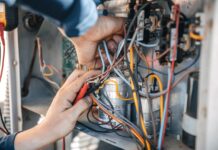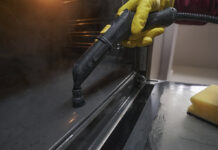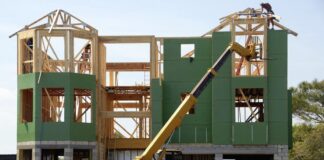An inspection report may highlight cosmetic issues and simple fixes, such as a broken window pane. These minor details, on the other hand, rarely cause a contract to fall apart. A buyer’s decision to back out or ask for a discount on the contract price is generally based on the cost of the problems, which are often hidden. Some of the most typical items that fail a home inspection defined by home inspector san antonio tx are listed below.
The first issue is a deteriorated roof.
Roofs made of asphalt shingles can endure anywhere from 15 to 20 years. Don’t be surprised if yours appears in the inspection report if it’s nearing the end of its useful life. Brittle, curled, or damaged shingles, as well as any loose flashing or leaky patches, will be noted by inspectors. A roof that has been ignored for a long time could cost $10,000 or more to replace.
How to avoid a failed house inspection:
Replace any shingles or flashing that have been damaged. Re-caulk any spots where the roof’s ventilation pipes protrude.
Drainage concerns are the second issue.
Surface grading around a house can wreak havoc on drainage and cause foundation damage. Improper grading can result in leaky basements, which can lead to mildew and other issues. It can also cause foundations to slip due to porous soil.
How to avoid a failed house inspection:
Grade the ground and create a 10-foot long slope around the house with topsoil. The ground should slope down one inch for every foot you travel away from the house. Rainwater should be directed away from the foundation by gutters and downspouts, which should be repaired or added.
The third issue is a faulty foundation.
Foundation difficulties are one of the most expensive concerns to repair, costing upwards of $10,000 in some situations. Doors and windows that stick, cracks in the walls above doorways, sloping floors, and L-shaped or horizontal fissures in the exposed areas of the outside foundation are all signs of foundation problems.
How to avoid a failed house inspection:
If you know your property has major foundation problems, it’s probably preferable to remedy them before selling it, as few purchasers want to deal with the inconvenience of foundation repair. Fill any cracks in your foundation with epoxy or silicone caulk for modest foundation repairs. Apply a waterproof coating to the outer base. Adjust the doors and windows to ensure that they all open and close smoothly.
Plumbing issues are the fourth issue.
Damaged pipes, broken water heaters, and backed-up sewage systems are all major reasons for a home inspection failing. Some types of plumbing pipes, such as those made of polybutylene, have been phased out and are prone to breakdown in older residences. These unsuitable plumbing materials will be reported by home inspectors.
How to avoid a failed house inspection:
Consider installing modern pipework in your plumbing system. Repair any apparent leaks as soon as possible. Drains must be unclogged and cleaned. It can also assist in the reseat of any toilets and the installation of new wax rings.
Pest infestations are issue number five.
An infestation of bugs, particularly termites, will send some homebuyers fleeing. If left untreated, termites and other wood-eating insects can cause considerable structural damage. Although a home inspector is equipped to see termite indications, your buyer may wish to have a separate termite inspection performed by a pest management business for added peace of mind.
How to avoid a failed house inspection:
Before a home inspection, get a professional pest control firm to check and treat your home. If termites are discovered, you must notify the authorities. Treat the termites and obtain a termite bond to safeguard the buyer against future infestations.
Mold is a hidden problem.
Mold discovered during an inspection can spell (and smell) disaster. Mold infestations can be expensive to clean up. However, if you don’t notice any musty odours in your home, you generally don’t need to be concerned. Excessive moisture causes mould, which is generally a sign of a leak or drainage problem.
How to avoid a failed house inspection:
Repair any noticeable leaks or gutters that aren’t working properly. Check to see if the ground around the house has been appropriately graded. Maintain a comfortable level of humidity in your home. Even if your house is uninhabited, you may need to run the air conditioner in the summer.
Heating systems that aren’t working properly are problem.
Buyers may be turned off by a near-death furnace because of the $5,000 to $8,000 replacement expense. Other difficulties include broken controls, clogged chimneys, defective heat exchangers, and out-of-code exhaust flues.
How to avoid a failed house inspection:
Having your furnace inspected once a year will help it last longer. If it’s too late, consider replacing your furnace to discourage potential buyers from walking away.
Electrical wiring is an issue.
Electrical wiring issues, such as reverse polarity, missing junction boxes, and damaged receptacles, are frequently encountered by home inspectors. Aluminum wiring may be inferior in homes built between 1965 and 1973, which home inspectors will notice.
How to avoid a failed house inspection:
Any malfunctioning outlets and junction boxes should be inspected and upgraded by a certified electrician. Make sure your breaker box is also properly labelled.
Problem #9: Structural deterioration
Sagging floor joists, rafters, and door headers are common structural problems in older homes. Many home inspectors will advise buyers to have the property assessed by an engineer if there is any doubt about whether a structural issue is major or small.
How to avoid a failed house inspection:
Structural repairs are among the most expensive and can deter potential purchasers. If your home shows indicators of structural difficulties, consult a structural engineer to determine the scope of the issues and the cost of repairs.
Problem #10: The state of the property is in a poor state of repair.
While visual flaws like peeling paint and split caulk aren’t serious issues in and of themselves, a slew of minor faults could be a deal breaker for some buyers. Having a lot of issues can indicate to an inspector and a buyer that the house hasn’t been well taken care of.
How to avoid a failed house inspection:
A fresh coat of paint on the inside and outside of a house can make a big difference in its appearance. Also, replace or repair any faulty light fixtures or appliances.
















